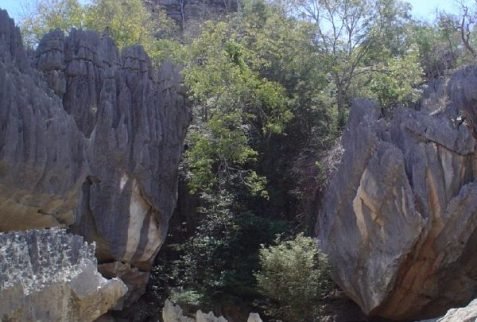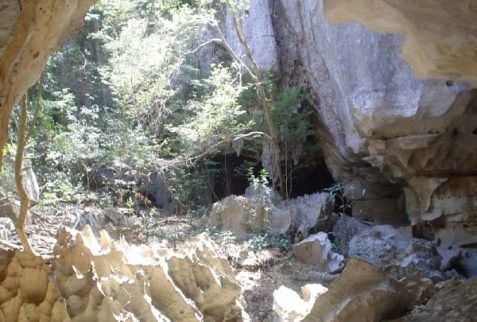Tsingy de Namoroka National Park
The Tsingy of Namoroka National Park is located in the North West part of Madagascar, in the Boeny region, 220 km southwest of the city of Mahajanga (about 12 hours’ drive).
Namoroka National Park is subject to a dry tropical type climate, with a marked dry season which can last from April to October and a rainy season the rest of the year. Expect the rainiest months to be January and February.
The Park is is located in a large area of Jurassic limestone. The limestone plateau occupies a large part of the park, and is in the form of lapiaz aka, Tsingy. It is hacked with wages and limited by cliffs of around 30 meters in height on average. The relief is not very marked, of low altitude and presents alluvial valleys.
The underground network is still poorly explored and, in general, the caves are linked to the intensely open areas that accompany major fractures. The most important underground network in Tsingy de Namoroka National Park is that of Anjohiambovonaomby.


The Park consists of several types of natural habitats. We can find dense dense forest on limestone plateau, the Tsingy, temporary bodies of water during the rainy season, rivers and streams and the savanna.
The Fauna
The endemicity of fauna in the park is impressive, we can find 18 species of Mammals, 5 species of amphibians, 30 species of reptiles and over 80 species of birds. Visitors can find up to 8 species of lemurs, including red-fronted brown lemur, the common brown lemur, Decken´s sifaka, grey mouse lemur, Milne-Edwards sportive lemur, fork-crowned lemur, eastern grey bamboo lemur and the aye-aye. Then we can also find 2 species of chameleons, 5 species of snakes, and 1 specie of tortue.
The Flora
The park is home to more than 220 species of plants and over 100 are endemic to Madagascar.
The type of climate combined with the soil formations has generated two types of ecosystems prevailing in this area: the dense dry semi-deciduous forest of Antsingy; the grassy savannah with Heteropogon contortus.
